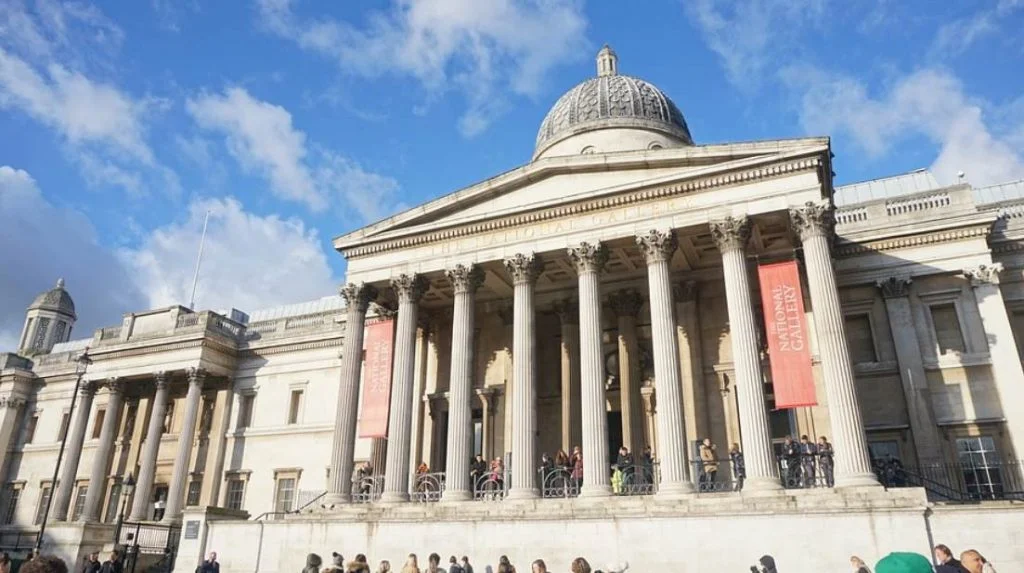Because of a recurring eye infection, one of the leading Impressionist artists of the 19th century was forced to abandon painting outdoors or “En Plein Air.”
Camille Pissarro (1830-1903) was stuck inside a hotel room during the final years of his life. During this period, he produced some of the most impressive cityscapes of Paris in history.
In this article, we take a closer look at some of the most interesting facts about The Boulevard Montmartre at Night by Camille Pissarro, a fascinating Impressionist painting
1. The painting was completed during the final decade of Pissarro’s life
Camille Pissarro was one of the founding fathers of the Impressionist art movement in the 19th century. He was born on the island of St Thomas in 1830 which was part of the Danish West Indies at the time.
The Danish-French artist was one of the instigators of the Impressionist exhibitions that started in the 1870s and exhibited his works in all 8 events between 1874 and 1886.
He was sometimes referred was a father figure to the other young aspiring artists with whom he extensively collaborated.
Perhaps his long grey beard had something to do with it, but his kind and warmhearted nature was the key factor.
After a brief spell of trying to perfect the Pointillist technique devised by Georges Seurat and Paul Signac, he returned to his Impressionist style during the final phase of his career.
He completed The Boulevard Montmartre at Night in 1897, about 6 years before he passed away at the age of 73.

2. It depicts a night scene of one of the four grands boulevards of Paris

As the name of the painting suggests, it depicts the Boulevard Montmartre during the evening.
The flickering street lights and the lights of store windows convey the crowded atmosphere of the big city.
Camille Pissarro was forced to paint indoors during the final years of his career because of an eye infection. This means that he had to partially abandon painting outdoors, a key characteristic of Impressionism.
I say partially because he painted this work from his open hotel room window. He checked into the Grand Hôtel de Russie on Rue Drouot in February 1897, a hotel located on the corner of Boulevard.
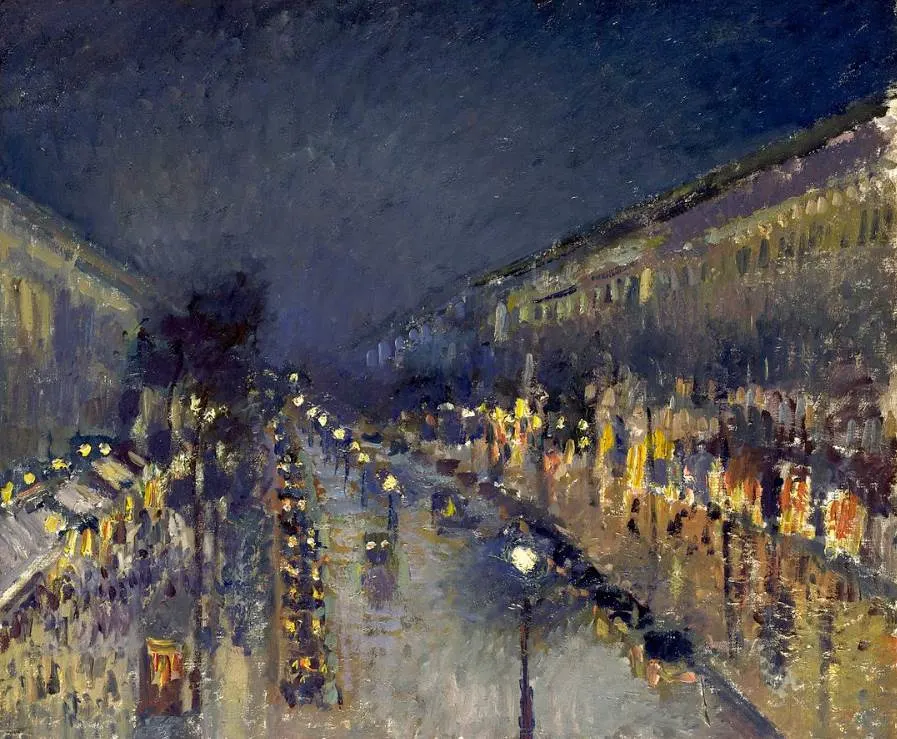
3. Despite its name, the boulevard is not located in Montmartre
The hotel room that he stayed in provided a great view of the Boulevard Montmartre, one of the 4 major Grand Boulevards of Paris. Pissarro commented on this saying:
I engaged a large room at the Grand Hôtel de Russie, 1 rue Drouot, from which I can see the whole sweep of boulevards almost as far as the Porte Saint-Denis, anyway as far as the boulevard Bonne Nouvelle.’
What’s interesting is that this boulevard isn’t located in the Montmartre district but to the south of it. It was established in 1763 and has a length of 215 meters and a width of 35 meters.
It’s squeezed in between the major Boulevard Haussmann and the Boulevard Poissonière. The Galeries Lafayette and the Palais Garnier are just walking distance to the west.
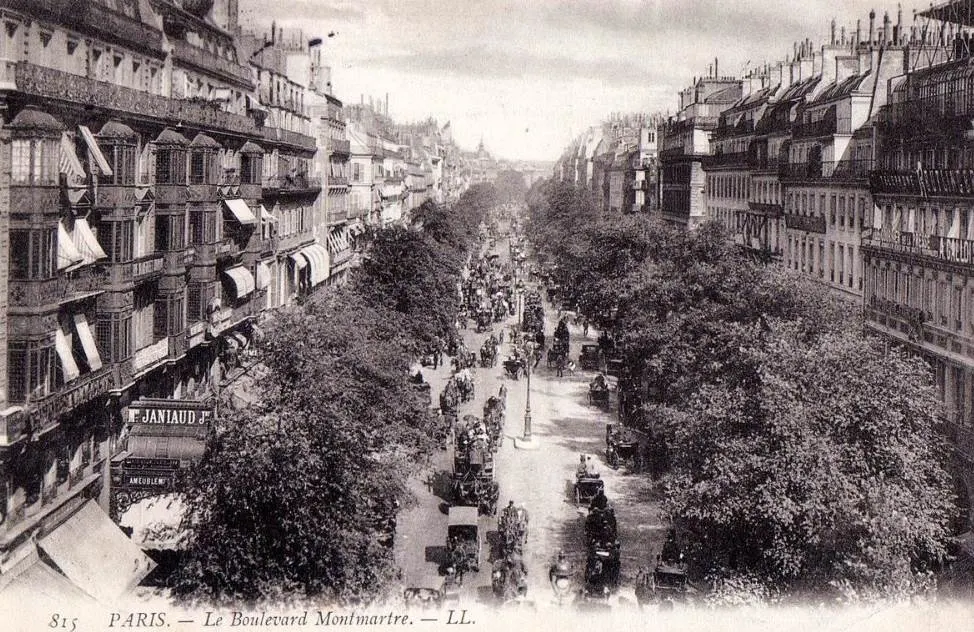
4. It’s a unique work in a series of 14 similar paintings
Another interesting fact about The Boulevard Montmartre at Night is that it’s the only of the 14 paintings in a series of 14 similar works that depict a scene at night.
Better yet, it’s the only night scene that Camille Pissarro ever painted. That’s mainly because he mainly focused on depicting the common man while he was still able to paint outdoors.
He had to look to the left from his hotel window to see the view in the paintings. It was a complicated subject for the artist because there was continuous traffic of carriages and people walking by.
The paintings were technically difficult because he had to produce them from an elevated position. The result, however, was 14 magnificent paintings that depict the Boulevard Montmartre at various times of the year.
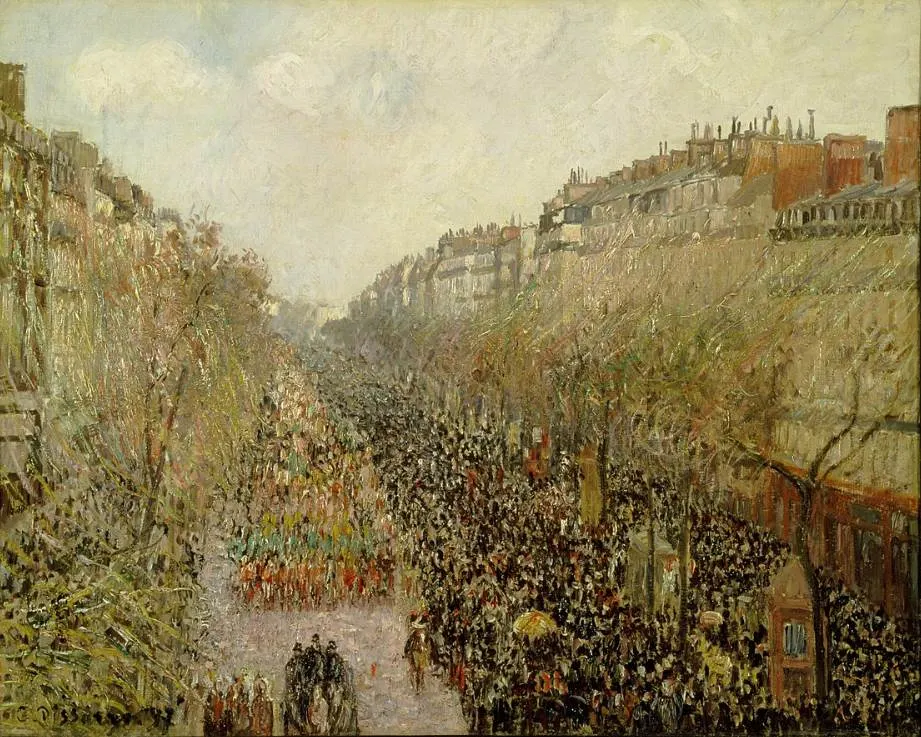
5. Pissarro was possibly inspired by the works of another Impressionist artist
Camille Pissarro mentioned in one of his letters to his son Lucien that art dealer Paul Durand-Ruel recently acquired 6 paintings depicting the snow effects on the streets.
He also said that the renowned art dealer was highly interested in a series of paintings depicting the Boulevards of Paris. This was a great incentive for Pissarro to tackle this subject.
He did, however, realize, that it was much more complicated than he initially imagined it to be:
It is terribly difficult, almost as the crow flies, looking over the carriages, buses, and people milling about between the large trees and big houses which I have to set up right. It’s tricky but it goes without saying that I must solve it all the same.
It’s also possible that he was inspired by a series of paintings by Claude Monet that depict Haystacks. Monet depicted these in a wide variety of manners, often playing with the emerging sunlight.
Pissarro commented on this matter as follows:
I have begun my series of boulevards. I have a splendid motif which I am going to explore under all possible effects.
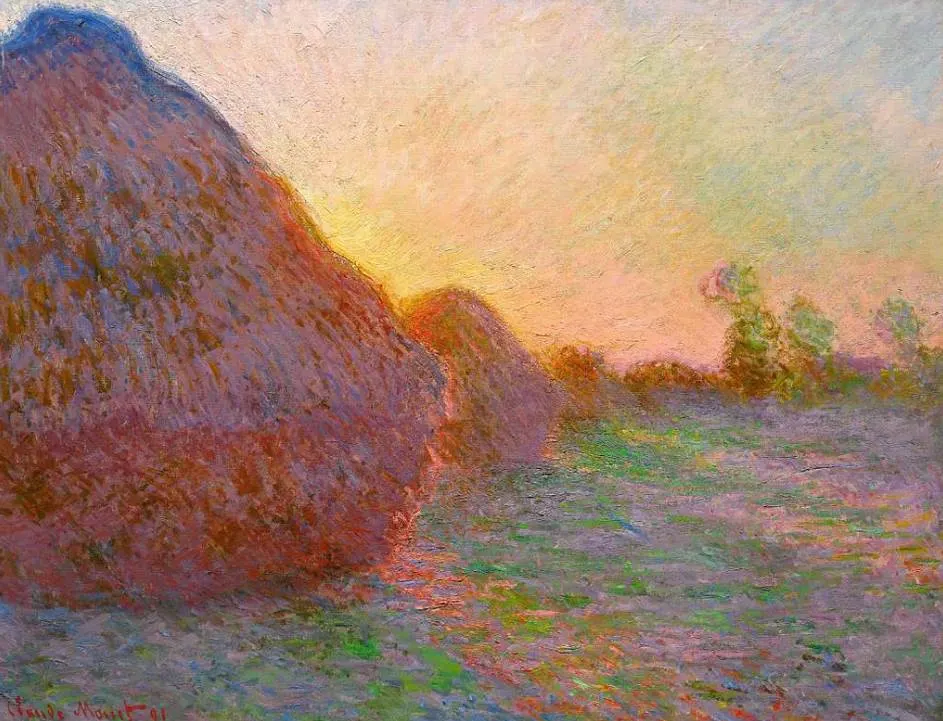
6. The Spring version of this subject was sold for nearly £20 million in 2014
The 14 paintings in the Boulevard Montmartre series by Camille Pissarro are considered to be some of the artist’s ultimate masterpieces.
This is reflected in the sale price of one of these paintings depicting a scene in Spring which is titled “Le Boulevard de Montmartre, Matinée de Printemps.”
This painting was sold at an auction at Sotheby’s in London for the whopping amount of £19,682,500 on February 5, 2014.
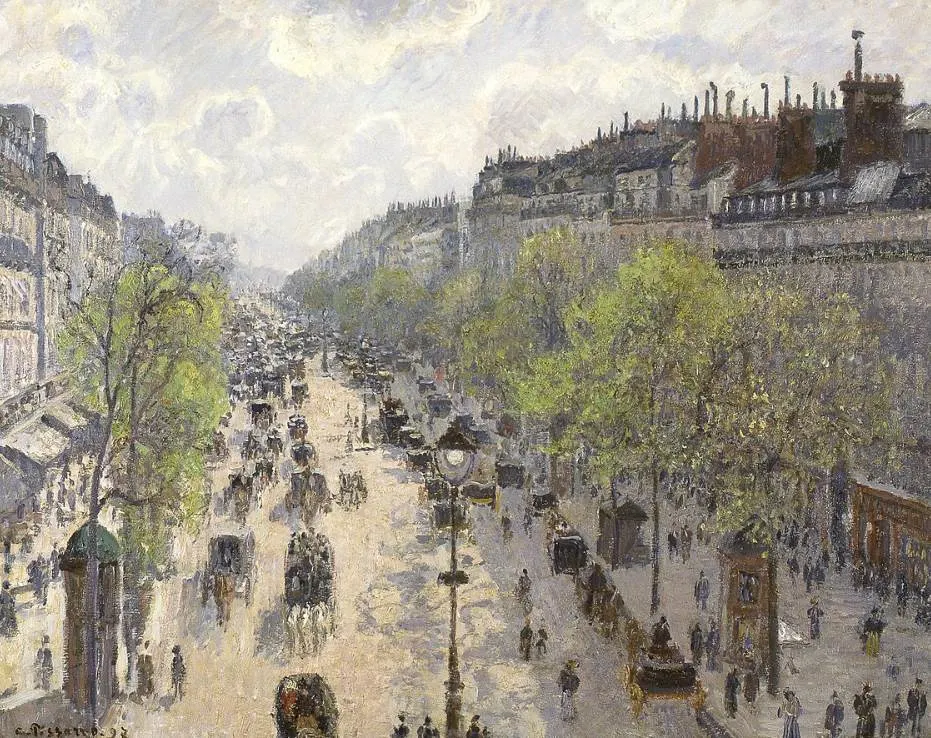
7. How big is The Boulevard Montmartre at Night by Camille Pissarro?
None of Camille Pissarro’s paintings in this series are huge works of art, and the painting depicting the scene at night is one of the smallest ones.
The Boulevard Montmartre at Night by Camille Pissarro is an oil on canvas painting that has dimensions of 53.5 x 65 centimeters (21 x 25.5 inches).
8. Where is the painting located today?
The painting was acquired by the Galerie Durand-Ruel in Paris, the most renowned art dealer in the city at the turn of the century.
It was bought by the National Gallery in London from the so-called “Courtauld Fund” in 1925. Today, it’s still a great attraction at the National Gallery in the City of Westminster.
